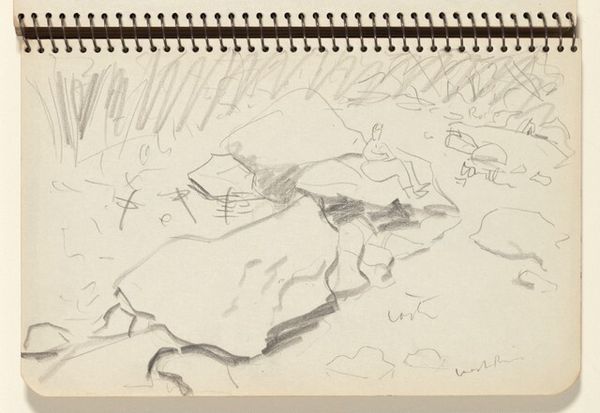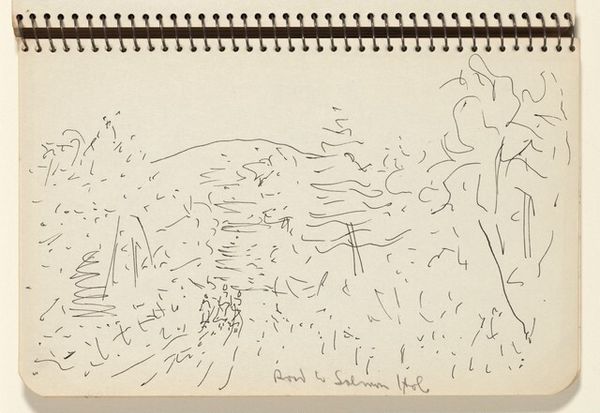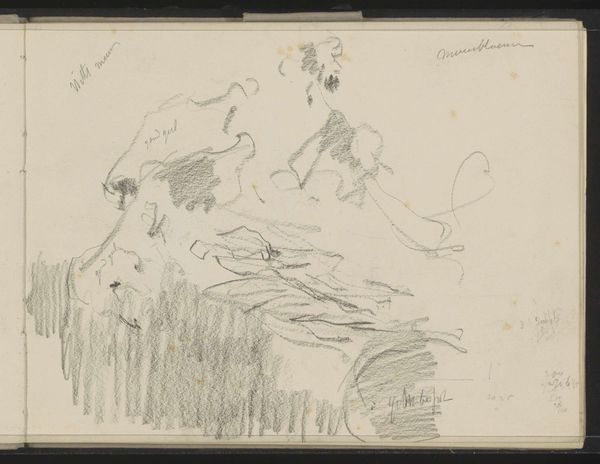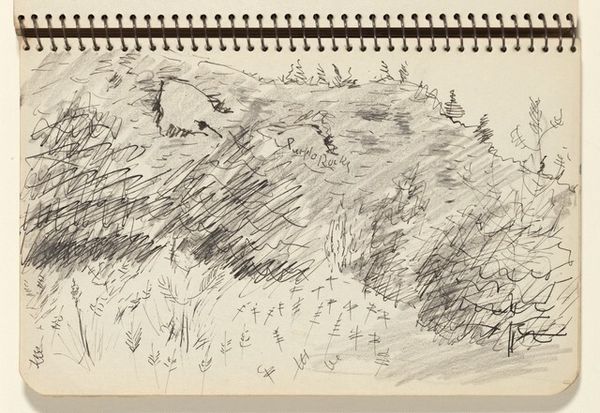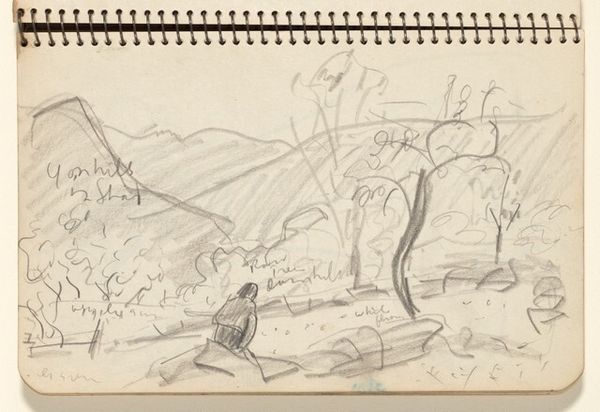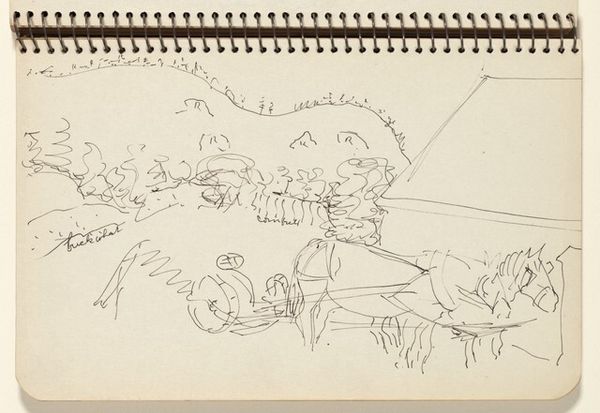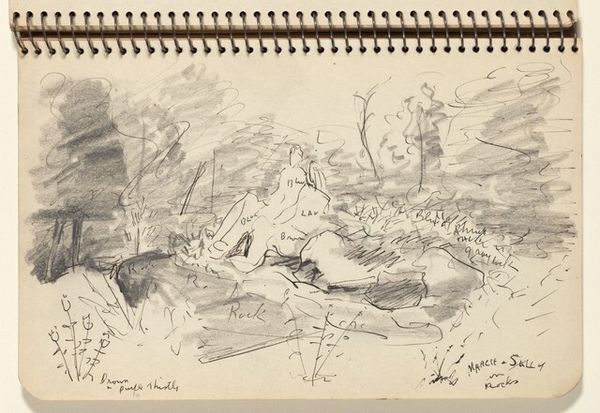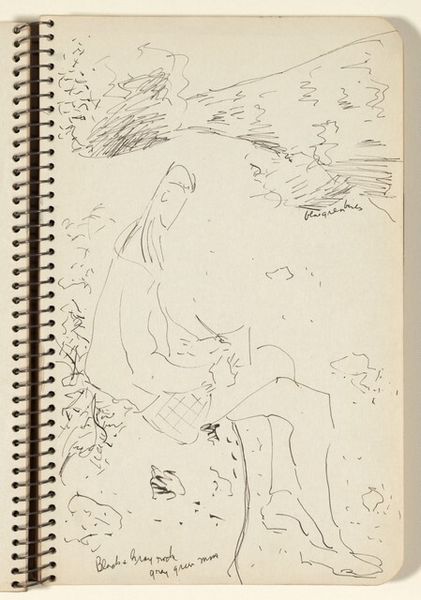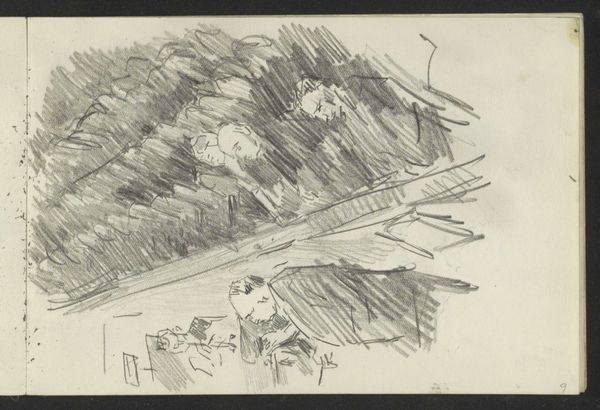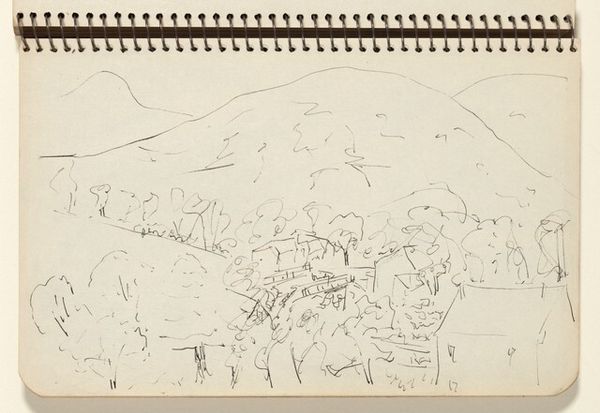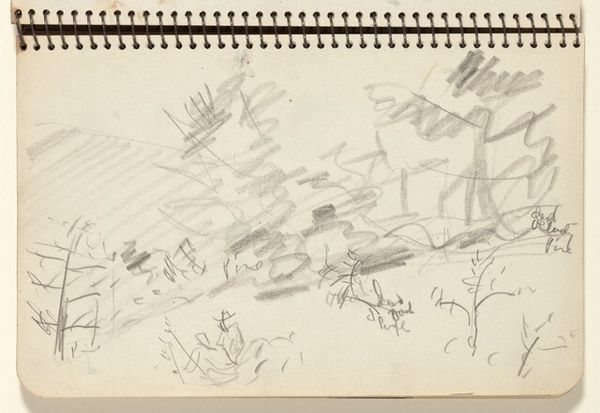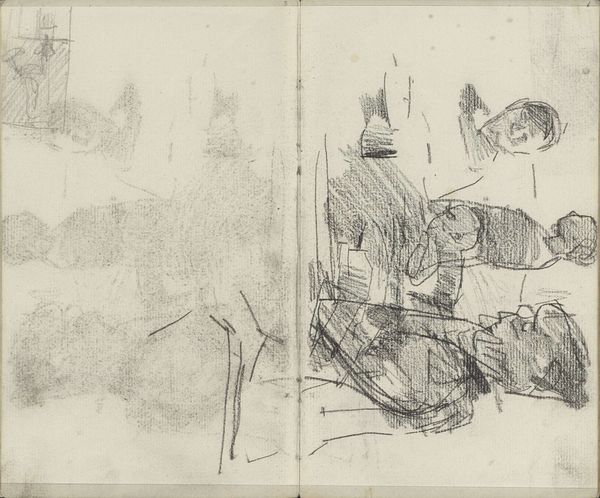
drawing, pencil
#
portrait
#
drawing
#
landscape
#
figuration
#
pencil
#
realism
Dimensions: overall: 12.8 x 20 cm (5 1/16 x 7 7/8 in.)
Copyright: National Gallery of Art: CC0 1.0
Curator: Before us we have Milton Avery's 1943 pencil drawing, "Two Figures in a Landscape." What's your initial reaction? Editor: Well, I’m immediately drawn to the mood it evokes. There's a kind of wistful stillness, isn't there? A moment of quiet contemplation nestled in a vastness of nature, sketched with such unassuming simplicity. Curator: Indeed. And that simplicity belies the social context. Remember, 1943 was deep into World War II. Avery, although not a direct war artist, was deeply affected by the political climate. I wonder if this seemingly peaceful scene hints at a longing for tranquility, for a return to simpler times, which art often embodied, then took it upon itself to push social messages through the art, with or without intention of the artists. Editor: It certainly feels that way. Look at the almost universal symbolism of the figures— archetypal nudes placed reverentially in the land; one resting, in what could be called quiet dejection, and the other more alertly and curiously situated. The land isn’t simply scenery. Curator: That's an insightful reading. The landscape in American art has a long tradition of representing not only beauty but also ownership and destiny. Placing these figures—nude and vulnerable, as you pointed out—suggests perhaps the vulnerability of mankind within this vast landscape of wartime, of hope. The figure seated upon the rock is not quite comfortable as there is discomfort and pensiveness of his situation, but the woman with hands over her head stands to embrace it, though also confused in situation. What might be interpreted with her expression and pose, do you suggest? Editor: She definitely mirrors classical iconography in contrapposto with her hands on top of her head. Almost reminiscent of Delphic oracles perhaps… as a vision of not hope necessarily but more revelation or insight into future landscapes… but, rendered more as an anxiety or distress, for wartime, indeed. Curator: Well, your insightful interpretation opens up rich questions regarding both cultural anxieties and lasting symbolization that art can play in turbulent times, no? Thank you. Editor: And, the value in these simple pencil sketches remind us that the core of all emotion, history and understanding stems from something just as uncomplicated— perhaps art at its purest as it has no real other outlet or function other than what is reflected by the person looking at it.
Comments
No comments
Be the first to comment and join the conversation on the ultimate creative platform.

